Posts Tagged DK Landscaping
Planting for Spring: Bulbs and Cool-Season Annuals to Add in October
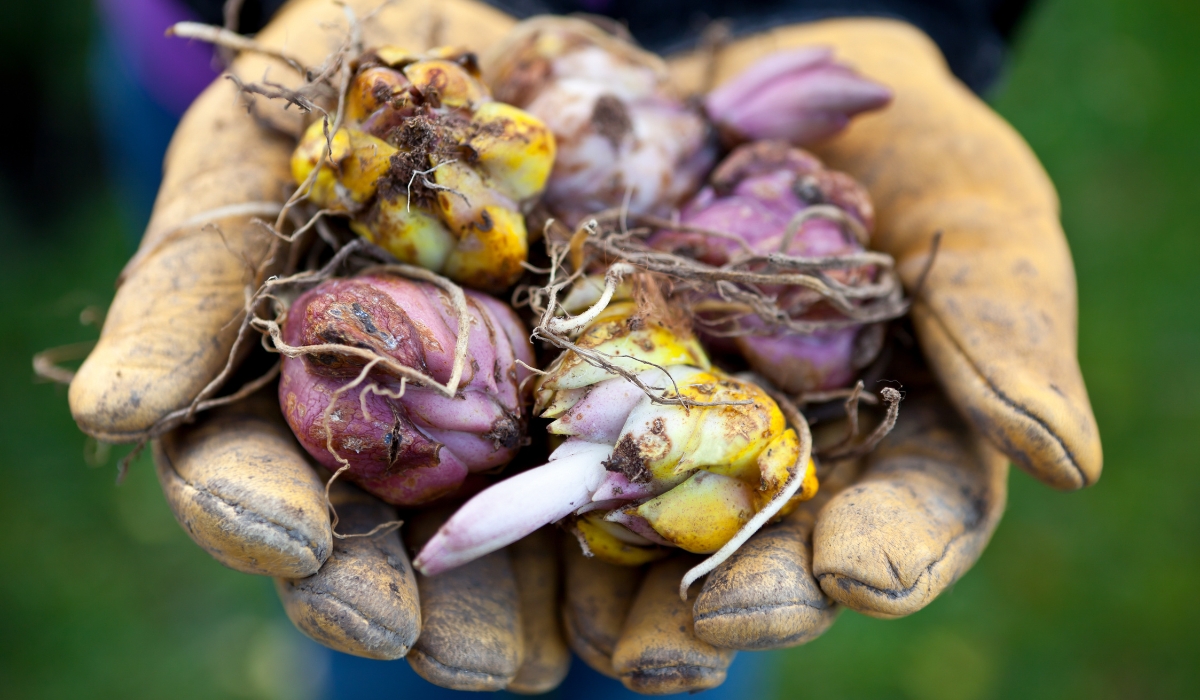
1. Spring-Blooming Bulbs: A Promise of Early Color
- Choose healthy, firm bulbs free of mold or damage.
- Plant at the right depth: Generally, bulbs should be planted two to three times as deep as their height (for example, a 2-inch bulb goes 4–6 inches deep).
- Group bulbs in clusters for a natural, dramatic effect rather than single rows.
- Water thoroughly after planting to settle the soil and encourage rooting.
2. Cool-Season Annuals for Fall and Early Spring Interest
- Plant annuals in well-drained soil amended with compost.
- Water regularly, especially during dry spells.
- Deadhead spent flowers to encourage continuous blooming.
3. Add Texture and Structure with Ornamental Grasses
4. Mulch and Protect New Plantings
5. Plan for Succession
Trust DK Landscaping for Expert Planting
Essential Fall Clean-Up Tips for a Healthy Landscape

1. Remove Fallen Leaves Regularly
2. Cut Back Perennials and Clean Up Beds
3. Prune Trees and Shrubs
4. Refresh Mulch and Protect Roots
5. Prepare Your Lawn and Equipment
6. Plan Ahead for Spring
Let DK Landscaping Handle the Heavy Lifting
September Lawn Recovery: Repairing Summer Damage for a Greener Fall
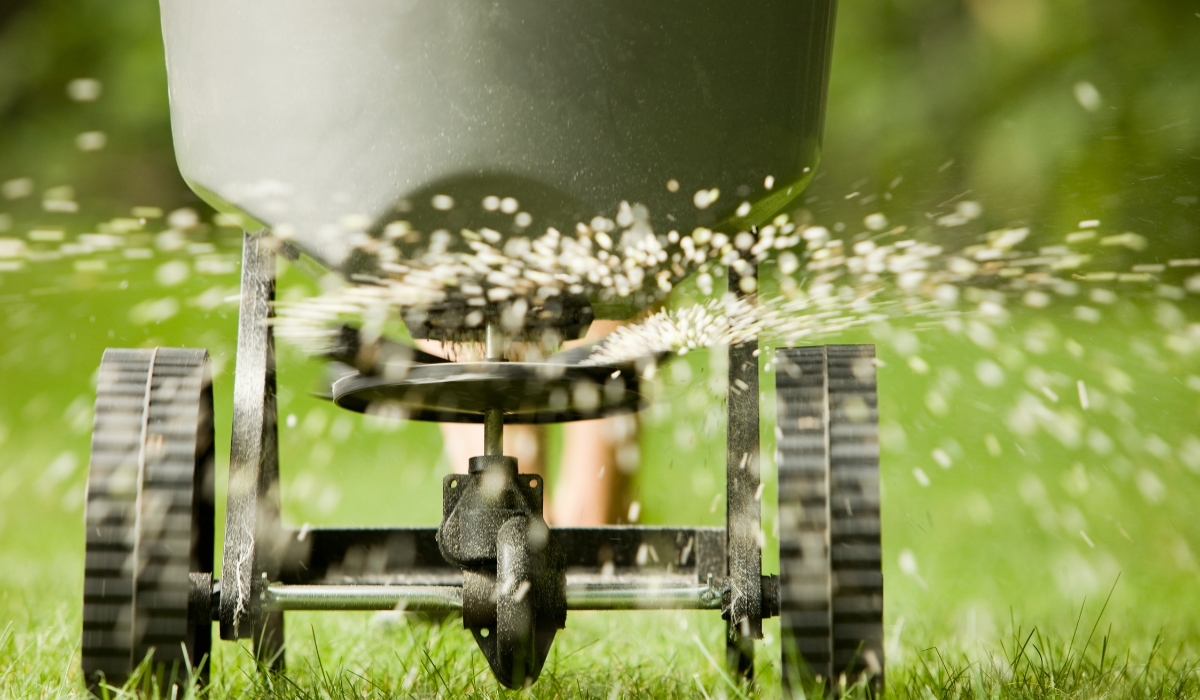
1. Aerate Your Lawn to Relieve Compaction
2. Overseed Thin or Bare Areas
3. Feed Your Lawn for Recovery
4. Address Weeds and Thatch
5. Water Consistently During Recovery
6. Maintain Good Lawn Practices
Trust the Experts for Lasting Results
Why Fall is the Best Time to Plant Trees and Shrubs
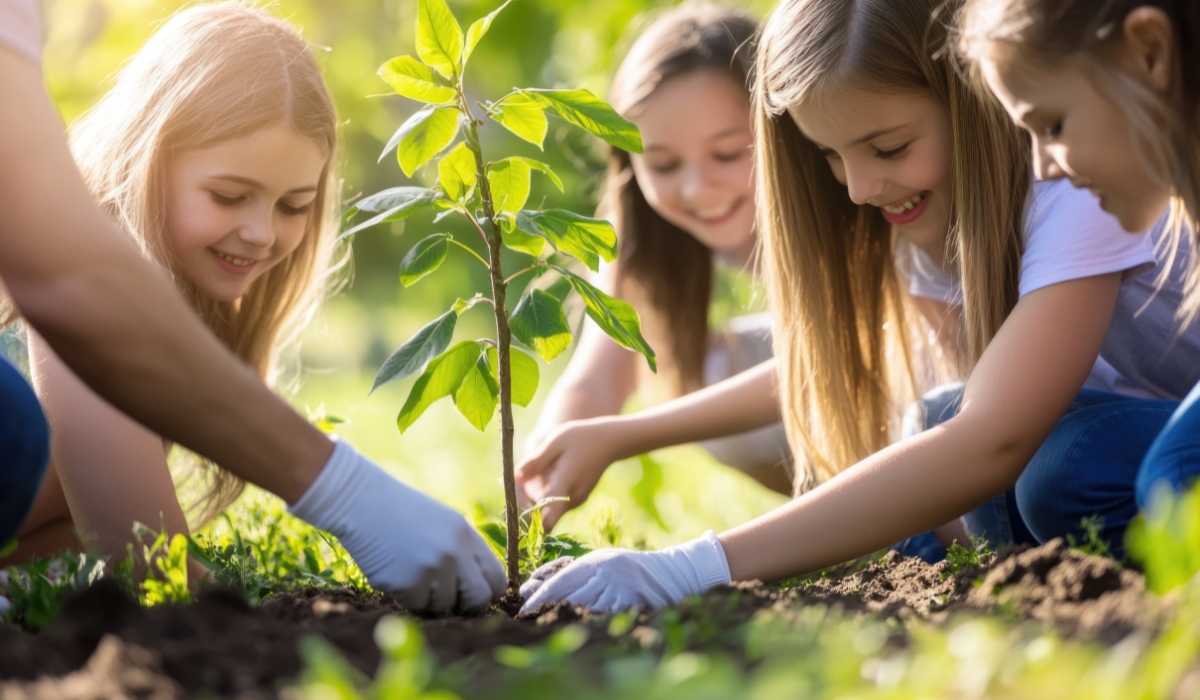
1. Cooler Temperatures, Less Stress
2. Warm Soil Promotes Root Growth
3. Less Watering Required
4. Fewer Pests and Diseases
5. Steps for Successful Fall Planting
- Choose the Right Plant: Select species and varieties that are well-suited to your region and site conditions.
- Dig Properly: Make the hole twice as wide as the root ball, but no deeper. Loosen the soil on the sides to encourage outward root growth.
- Plant at the Correct Depth: The top of the root ball should be level with the surrounding soil.
- Backfill and Water Well: Replace the soil, gently tamping it down to remove air pockets. Water thoroughly after planting.
- Mulch: Add a 2–3 inch layer of mulch around the base (but not against the trunk) to retain moisture and regulate soil temperature.
6. Plan for Ongoing Care
Trust Your Local Experts
August Planting Guide: Best Flowers and Shrubs to Add Now
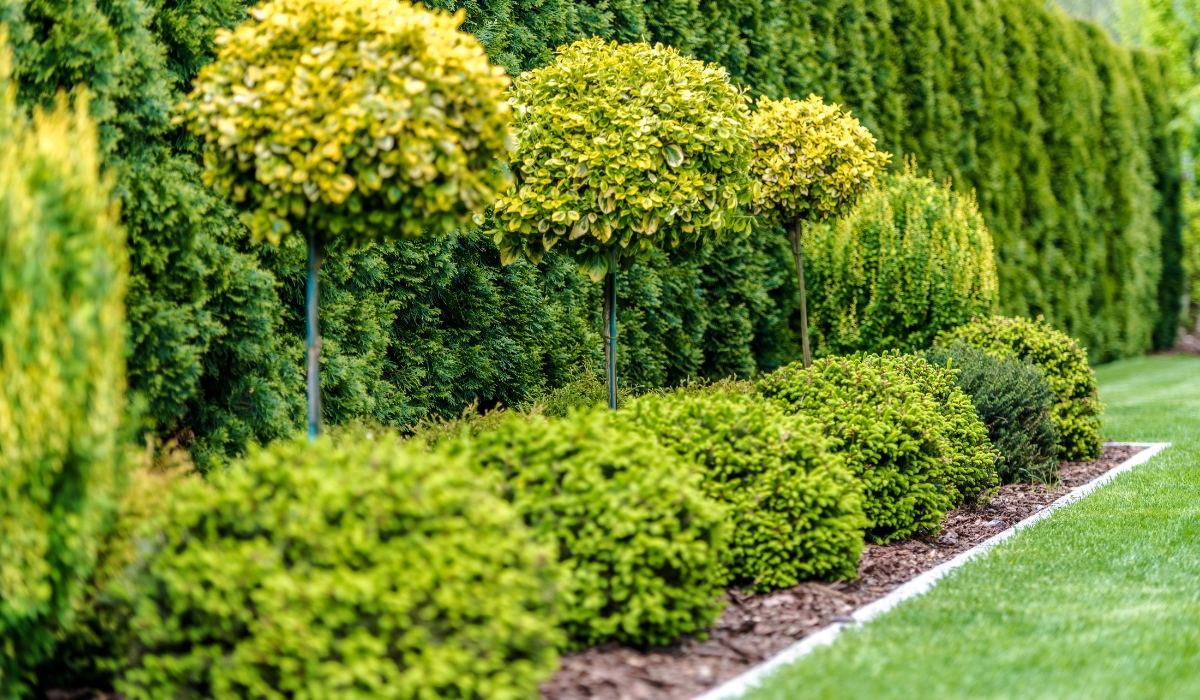
1. Heat-Tolerant Annuals for Instant Color
2. Late-Blooming Perennials for Season-Long Beauty
- Loosen the soil and mix in compost for added nutrients.
- Space plants according to their mature size.
- Water thoroughly and mulch around the base to conserve moisture.
3. Shrubs That Shine in Late Summer
- Dig a hole twice as wide as the root ball but no deeper.
- Place the shrub so the top of the root ball is level with the soil surface.
- Backfill, water deeply, and mulch to retain moisture.
4. Tips for Successful August Planting
- Water new additions deeply and regularly during their first few weeks, as summer heat can quickly dry out the soil.
- Mulch around the base of new plants to help conserve moisture and suppress weeds.
- Avoid fertilizing immediately after planting; let roots settle first, then feed lightly in early fall if needed.
5. Plan for Fall and Beyond
Expert Help When You Need It
Late Summer Lawn Care: How to Keep Your Grass Green Through the Heat
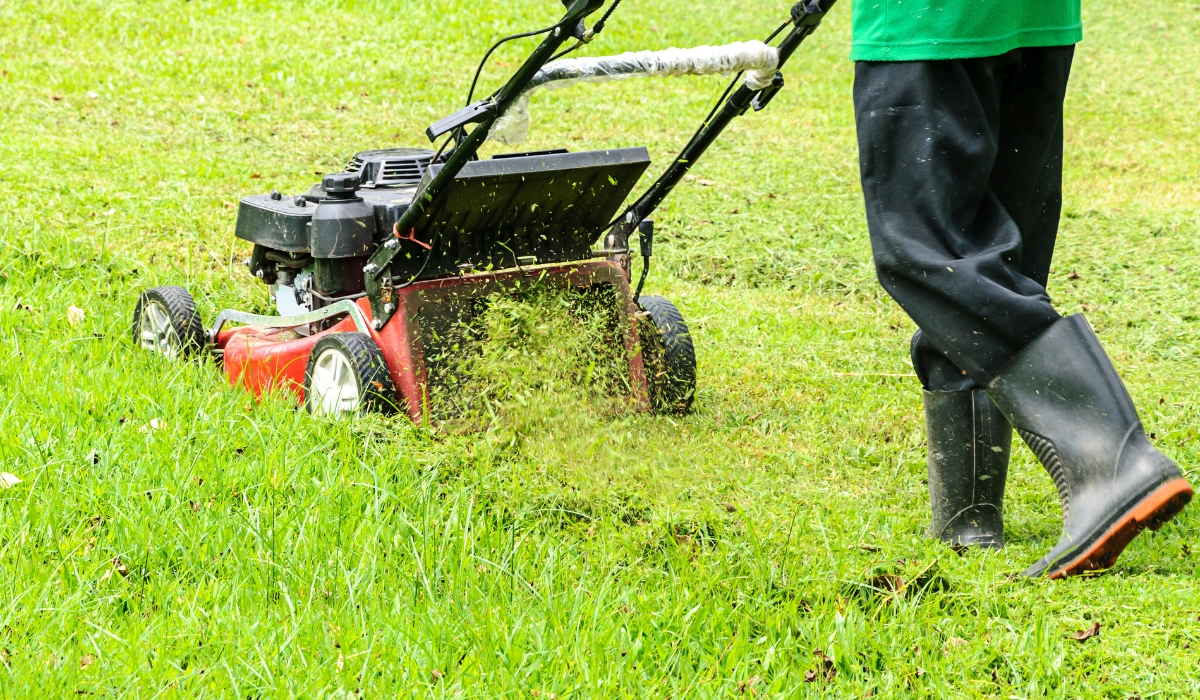
1. Water Deeply, Not Daily
2. Raise Your Mower Blade
3. Fertilize Lightly, If at All
4. Control Weeds and Monitor for Pests
5. Plan Ahead for Fall
Trust the Pros
Beyond the Buzz: Creating a Bee-Friendly Garden That’s Also Beautiful
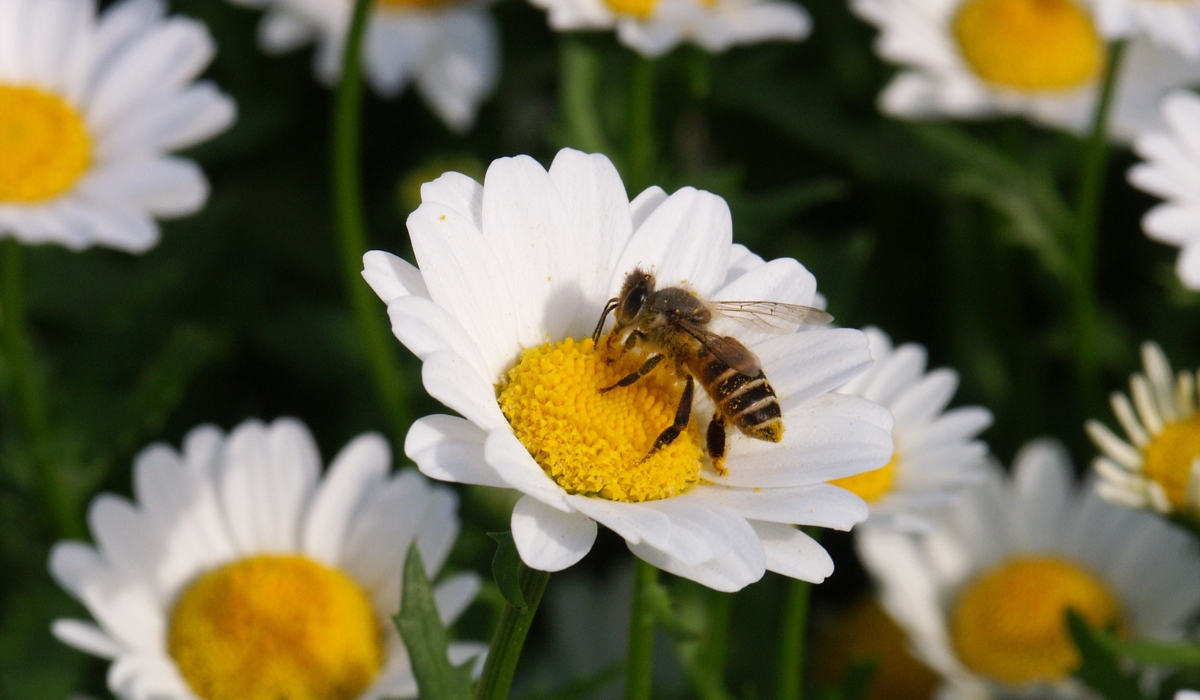
A garden teeming with life is a joy to behold, and the gentle buzzing of bees is a sure sign of a healthy ecosystem. But creating a bee-friendly garden isn’t just about helping our fuzzy, flying friends; it’s also about creating a vibrant, beautiful space for you and your family to enjoy. At DK Landscaping, we believe that you can have a garden that’s both a haven for pollinators and a stunning showcase of natural beauty.
Why Welcome Bees?
Bees are essential pollinators, responsible for much of the food we eat and the flowers we enjoy. By creating a bee-friendly garden, you are:
- Supporting Local Ecosystems: A healthy bee population is vital for the pollination of local plants, helping to maintain biodiversity in our community.
- Boosting Your Garden’s Health: More bees mean better pollination for your flowers and vegetable gardens, leading to more vibrant blooms and a more bountiful harvest.
- Creating a More Engaging Outdoor Space: A garden full of life is a garden full of interest. Watching bees flit from flower to flower is a simple pleasure that connects us with the natural world.
Designing Your Bee-Friendly Oasis
Creating a garden that bees will love is easier than you might think. Here are a few key principles to get you started:
- Plant in Patches: Bees are more attracted to large clusters of the same type of flower. Planting in patches of at least one square yard will make it easier for them to find and forage.
- Choose a Variety of Flowers: Different bees are active at different times of the year, so it’s important to have a variety of flowers that will bloom from early spring to late fall. This will provide a continuous source of food for our pollinating pals.
- Think in Color: Bees are most attracted to blue, purple, yellow, and white flowers. Incorporating these colors into your garden design is a sure way to catch their eye.
- Provide a Water Source: Bees need water to drink, but they can easily drown in open water. A shallow dish filled with pebbles or marbles and a small amount of water will give them a safe place to land and rehydrate.
Bee-utiful Plant Choices
Here are a few of our favorite bee-friendly plants that will also add a splash of color and beauty to your garden:
- Lavender: This fragrant herb is a bee magnet and its beautiful purple spikes will add a touch of elegance to any garden.
- Salvia: With a wide variety of colors and sizes, there’s a salvia for every garden. Their long-lasting blooms will keep the bees coming back for more.
- Sunflowers: These cheerful giants are not only a favorite of bees, but they also provide a tasty treat for birds and other wildlife.
- California Poppies: As our state flower, this vibrant orange beauty is a natural choice for any California garden and a favorite of local bees.
Ready to create a garden that’s buzzing with life? The team at DK Landscaping is here to help. We can design and install a beautiful, bee-friendly garden that you’ll love for years to come. Contact us today to learn more!
Pest Patrol: Organic Solutions for a Healthy May Garden

As May unfolds in California, bringing warmer weather and lush growth, it also signals the emergence of a familiar cast of characters: garden pests. Before you reach for harsh chemical sprays, consider the power of organic solutions! At DK Landscaping, we believe in nurturing a healthy ecosystem in your garden, which naturally deters pests without harming beneficial insects, pets, or your family. Here’s your guide to organic pest patrol this May.
Know Your Enemy: Identification is Key
Effective organic pest control starts with identifying the culprit. Are you seeing tiny, pear-shaped insects clustered on new growth (aphids)? Silvery trails on leaves (snails/slugs)? Chewed leaves with distinct holes (caterpillars or earwigs)? Or perhaps fine webbing on the undersides of leaves (spider mites)? A quick online search or a visit to your local nursery can help you pinpoint the pest and understand its lifecycle.
Prevention is the Best Defense
A strong, healthy plant is more resilient to pest attacks.
- Healthy Soil: Amend your soil with compost to foster robust plant growth.
- Right Plant, Right Place: Ensure plants are suited to your climate and sun exposure. Stressed plants are more susceptible to pests.
- Good Air Circulation: Prune overcrowded plants to improve airflow, discouraging fungal issues that can weaken plants and make them pest-prone.
- Attract Beneficials: Plant flowers like dill, fennel, yarrow, and cosmos to attract ladybugs, lacewings, and parasitic wasps, which are natural predators of many common pests.
- Regular Scouting: Inspect your plants frequently, especially new growth and the undersides of leaves. Early detection makes treatment much easier.
Targeted Organic Treatments
Once identified, here are some gentle, yet effective, organic treatment methods:
- Hand-Picking: For larger pests like snails, slugs, or caterpillars, simply hand-pick them off your plants and drop them into a bucket of soapy water. Do this in the early morning or evening when they are most active.
- Strong Water Spray: A forceful spray of water can dislodge aphids, spider mites, and whiteflies from plant foliage. Repeat every few days until the population is controlled.
- Insecticidal Soap: For soft-bodied insects like aphids, mealybugs, and spider mites, insecticidal soap is a great option. It works by disrupting their cell membranes. Ensure thorough coverage, especially on the undersides of leaves. Always follow product instructions carefully.
- Neem Oil: Derived from the neem tree, this natural insecticide acts as an anti-feedant and growth disruptor for a wide range of pests. It’s effective against aphids, spider mites, whiteflies, and more. Apply as directed, typically in the cooler parts of the day.
- Diatomaceous Earth (DE): For crawling insects like slugs, snails, and earwigs, a barrier of food-grade DE around plants can be effective. It works by abrading their exoskeletons, causing dehydration. Apply when dry and reapply after rain.
By adopting these organic pest patrol strategies, you’re not just tackling immediate problems; you’re cultivating a resilient, vibrant garden that works in harmony with nature. For expert advice on maintaining a healthy, pest-free landscape, contact DK Landscaping – we’re dedicated to sustainable beauty.
Beat the Heat: Smart Watering Strategies for Your May Landscape
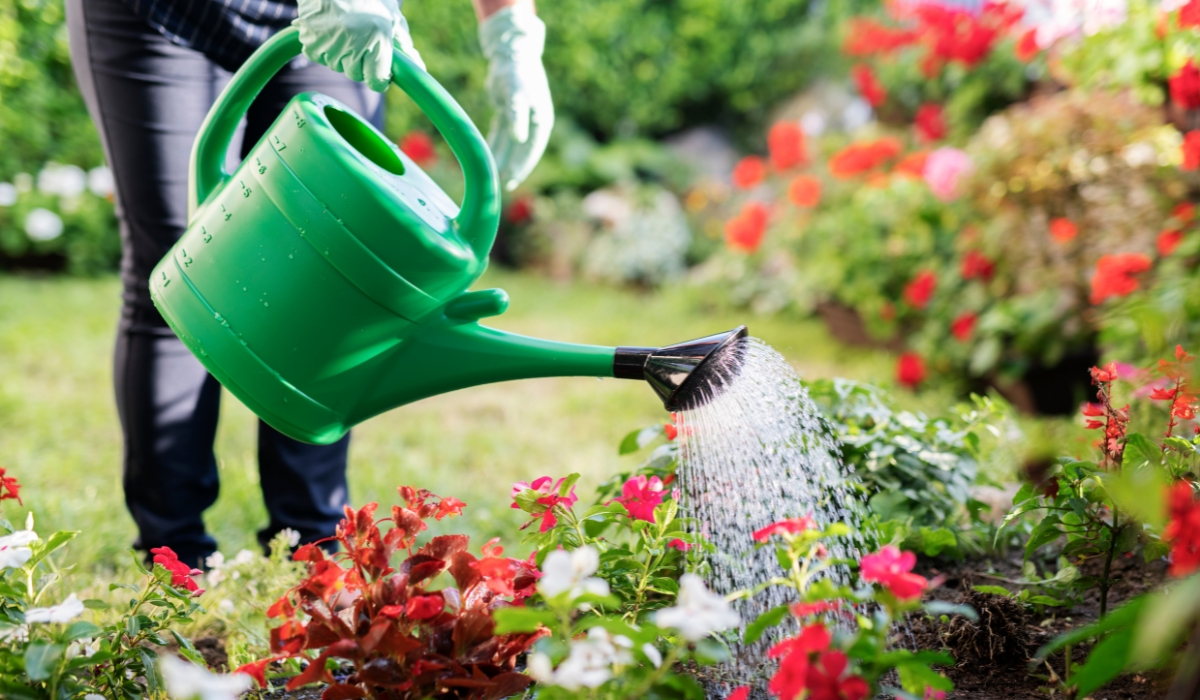
As May arrives in California, so do the steadily rising temperatures. While we all love the sunshine, our gardens start to feel the heat, making smart watering more crucial than ever. At DK Landscaping, we’re committed to helping you maintain a healthy, vibrant landscape while conserving our precious water resources. Here’s how to water smarter, not harder, this May.
The Golden Rule: Water Deeply and Infrequently
Instead of frequent, shallow watering, train your plants to develop deep root systems by watering deeply but less often. This encourages roots to reach further down for moisture, making your plants more resilient to drought and heat stress. For most established trees and shrubs, aim for once a week, or even less for drought-tolerant natives, ensuring the water penetrates at least 18 inches into the soil.
Precision Matters: Embrace Drip Irrigation
If you haven’t already, consider installing or expanding your drip irrigation system. Unlike traditional sprinklers that lose a significant amount of water to evaporation and runoff, drip irrigation delivers water directly to the plant’s root zone, minimizing waste. This targeted approach can improve water use efficiency by 20-50%, fostering healthier plants with deeper root systems. For optimal results, ensure multiple emitters are placed around larger plants to encourage a wider root spread, rather than a single point source.
The Best Time to Water: Timing is Everything
When the sun is high and winds are strong, evaporation rates soar. The best time to water your California landscape in May is in the early morning, ideally between sunset and sunrise, or before 9:00 AM. This allows the water to soak into the soil before the heat of the day causes it to evaporate, and minimizes the risk of fungal issues that can arise from wet foliage overnight in humid conditions. Watering during the middle of the day can lead to a 30% increase in water required due to evaporation.
Harnessing Technology: Smart Controllers
Take the guesswork out of watering with a smart irrigation controller. These innovative devices use local weather data (like temperature, humidity, and rainfall) or even soil moisture sensors to automatically adjust your watering schedule. This means your system will only water when your plants truly need it, preventing overwatering and significant water waste. Many smart controllers are also eligible for local rebates, making them a wise investment for both your wallet and the environment.
Beyond Irrigation: Supplementary Tips
- Mulch, Mulch, Mulch: A 2-3 inch layer of organic mulch around your plants significantly reduces soil moisture evaporation and suppresses weeds that compete for water.
- Group Similar Needs: Place plants with similar water requirements together in “hydrozones” to optimize your irrigation schedule.
- Check for Leaks: Regularly inspect your irrigation system for any leaks or broken sprinkler heads. Even a small leak can waste hundreds of gallons of water.
- Prioritize: If water restrictions are in place, prioritize watering valuable trees and shrubs over annuals or lawns, as they are more difficult and costly to replace.
By implementing these smart watering strategies this May, you’ll not only keep your California landscape looking its best but also contribute to vital water conservation efforts. For personalized advice and professional irrigation solutions, don’t hesitate to reach out to DK Landscaping – we’re here to help your garden flourish responsibly.
Beyond the Bloom: Designing Your Dream Spring Garden with Native California Plants
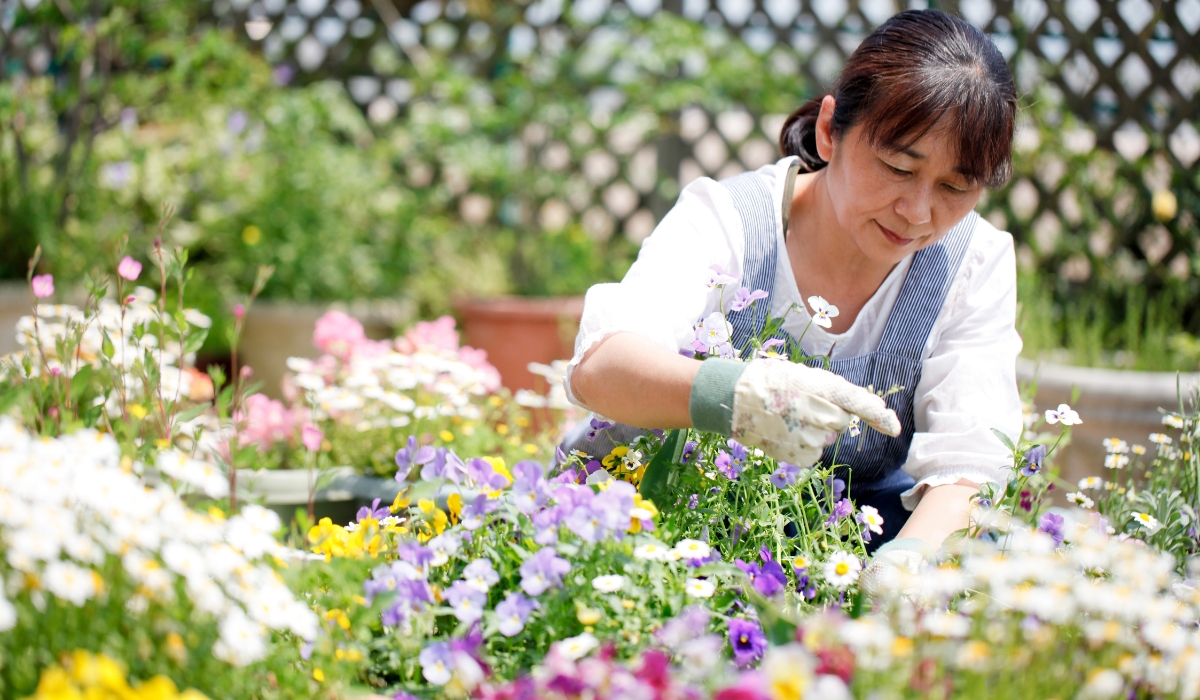
Spring in California isn’t just about fleeting blossoms; it’s an opportunity to create a garden that thrives with minimal fuss and celebrates our unique ecosystem. At DK Landscaping, we champion the beauty and resilience of native California plants. Designing with these incredible species ensures a vibrant spring garden that’s not only stunning but also sustainable and perfectly adapted to our climate.
Why Go Native? The Unbeatable Benefits
Choosing native plants for your spring garden offers a multitude of advantages. First and foremost, they are inherently water-wise. Having evolved in California’s arid to semi-arid conditions, they require significantly less irrigation once established, saving you money and conserving a precious resource. Beyond water savings, native plants are naturally resistant to many local pests and diseases, reducing the need for chemical interventions. They also provide vital habitat and food sources for local wildlife, attracting beneficial insects, butterflies, and birds, bringing your garden to life.
Selecting Your Spring Stars: Beauty and Function
The diversity of California native plants is astounding, offering a palette of textures, colors, and forms for any garden style. For eye-catching spring blooms, consider the brilliant purples of California Lilac (Ceanothus), the sunny yellows of California Poppies (Eschscholzia californica), or the delicate pinks of Coral Bells (Heuchera). For structural interest and year-round greenery, explore Manzanita (Arctostaphylos) varieties with their striking red bark, or the silvery foliage of various sages (Salvia). Don’t forget groundcovers like Creeping Mahonia (Mahonia repens) for shady spots or sedges (Carex) for a grassy effect.
Placement with Purpose: Designing for Success
Thoughtful placement is key when designing with native plants. Mimic natural plant communities by grouping plants with similar water and sun requirements together. “Right plant, right place” is our mantra! Most California natives prefer well-draining soil and full sun, but there are excellent choices for partial shade as well. Consider mature size when planting to avoid overcrowding, and remember that many natives benefit from adequate spacing to promote air circulation. Layering different plant heights and textures will create visual interest and depth, transforming your garden into a dynamic living tapestry.
By embracing the beauty and ecological wisdom of native California plants, you’re not just planting a garden; you’re cultivating a sustainable, low-maintenance, and utterly captivating landscape that celebrates the true spirit of our Golden State. Let DK Landscaping help you design and realize your dream spring garden – one native plant at a time.





